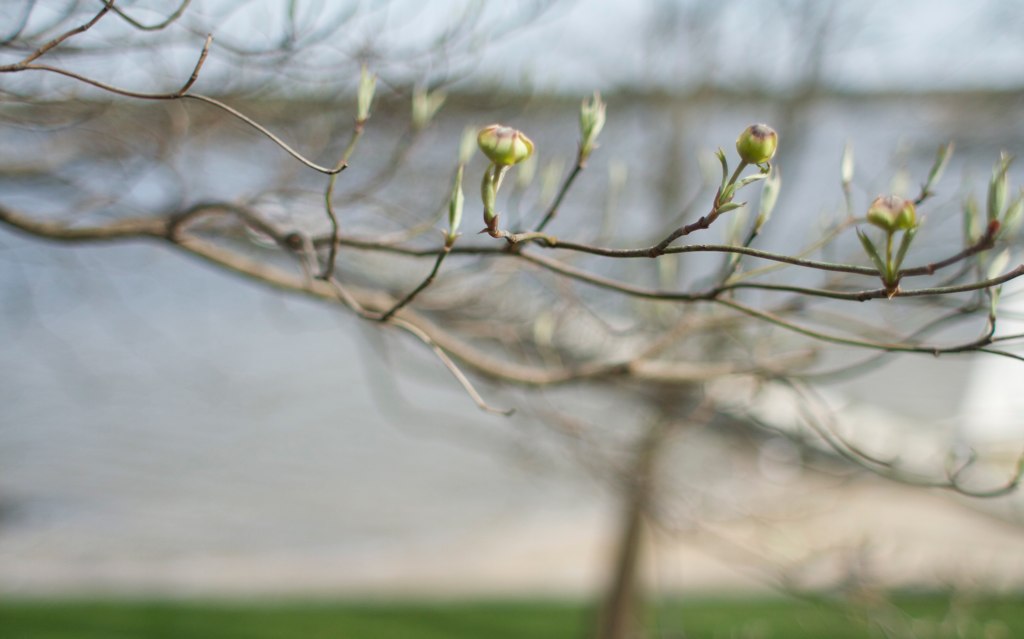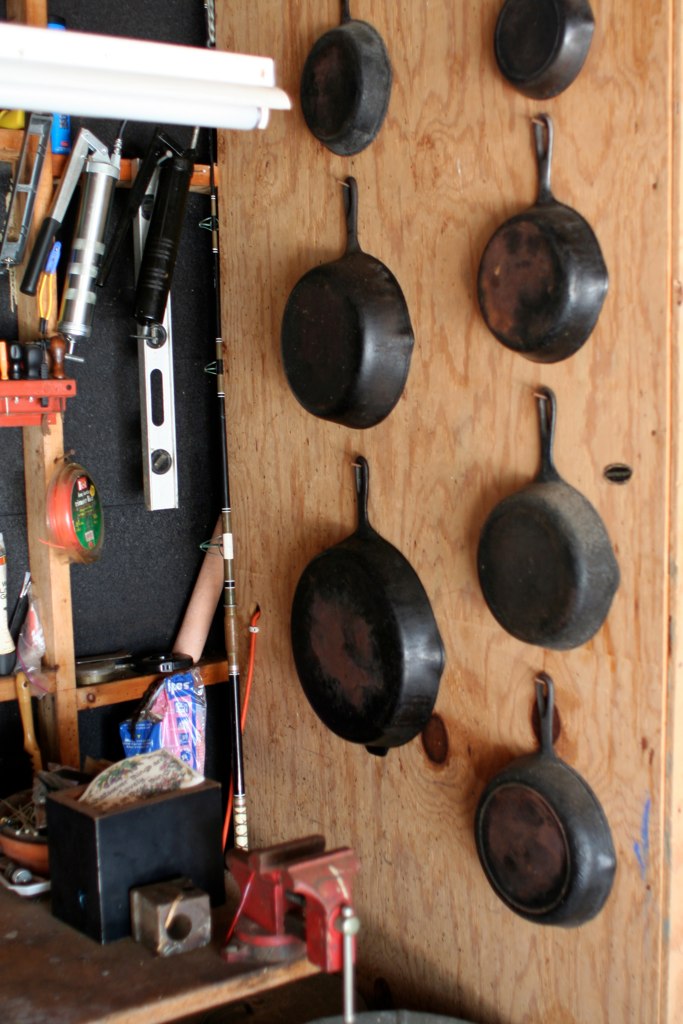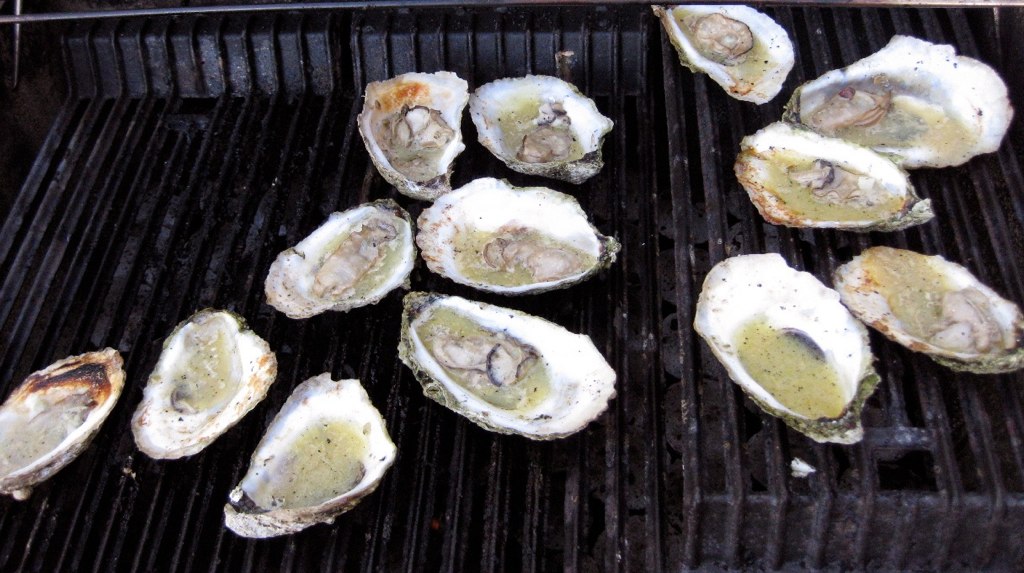I drive back once a year or so, and the flavor and sights always roll over me the same. The neverending haul, the decaying farmhouses and lanes bearing names like “Bob’s Hole” and “Nohead Bottom” flying by. Toward the end, churches seem to outnumber houses, and if you drive all the way out to Stingray Point, marinas beat out churches. Then my family's house, the one my grandfather built the year after I was born. You can still find the wooden hat rack–the one with your choice of straw, floppy floral, or mock captains’ caps. There, in the sleeping loft, is the box of Marlboro dominoes we used to line up and click together in courses. Visit the powder room, and you'll still be greeted by that same hot orange sink and the loud, blue-and-green striped wallpaper, proud survivors of the 70’s and numerous redecorations. And in the garage, a wall of cast iron skillets of all sizes–hanging, naturally, alongside soldier-straight fishing rods and power tools.
I adore going back, but I always leave with the feeling that I can never really go back. For one thing, a few key players have left the game. For another, I can never again be the urchin tracking sand through the house–because now I'm the grown-up chasing behind with the broom. I watch as my daughters dye Easter eggs and run down the great hill, across the sand and into the shallows (which they did, thanks to the April heat wave). They could easily stand in for my sister and me at their age, but I’m looking at us through my own, adult eyes. It's eerie, gratifying, and oddly circular all at once.
And we’re making our own grown-up food memories now, because that's what it's all about. The rockfish (striped bass) have rebounded and taste delicious any way you cook them. We've enjoyed some epic riverside feasts with cousins. Always there's wine, because it flows enthusiastically when my old man's on the scene and seems to taste better with a briny wind blowing off the Chesapeake. And last year, to our delight, we discovered morels sprouting in the poplar stand behind the house; you really can't beat just-picked morels sauteed in a little brown butter. Unfortunately, Easter fell too early and dry this year to bring them up yet, but I’ll be back for them and the oysters and all the other pleasures…that's the fun of having feet in two worlds.
Oysters Grilled on the Half Shell
Years back, at a wedding in Alabama, my father cajoled this recipe out of the cooks working a huge outdoor wood-fired oyster roasting station. You can find out how to rig your own on page 414 of The Lee Bros. Southern Cookbook, or you can just use a grill. Burn natural wood charcoal or throw on a handful of soaked wood chips for maximum flavor.
Ingredients:
- 1 dozen oysters, shucked, oysters and their liquor left on the half shell
- 4 tablespoons unsalted butter
- garlic salt
- onion salt
- (or, substitute 2 pressed or minced garlic cloves plus a pinch of sea salt for garlic and onion salts)
- Fresh lemon juice–about 2 tablespoons
- A couple "throws" of Worcestershire sauce
- Freshly ground pepper
Instructions:
Preheat grill to medium-high. Throw soaked wood chips on the fire if using; just make sure fire doesn't reach up to grates. Melt butter and stir in other ingredients to taste. Follow your taste buds, but be careful with the onion/garlic salts if using, since oysters already contain plenty of salt on their own. Ditto with the Worcestershire–it's strong. Arrange oysters in their shells on grill and drizzle with plenty of the butter mixture. Grill for 5 minutes or so, lowering lid for a minute or two to hasten cooking, and remove when oysters are opaque and hot (times will vary). Serve with additional lemon wedges or hot sauce, if desired. Use bread to mop up the sauce left in the shells.






your stories of your childhood are my fave!
ReplyDelete